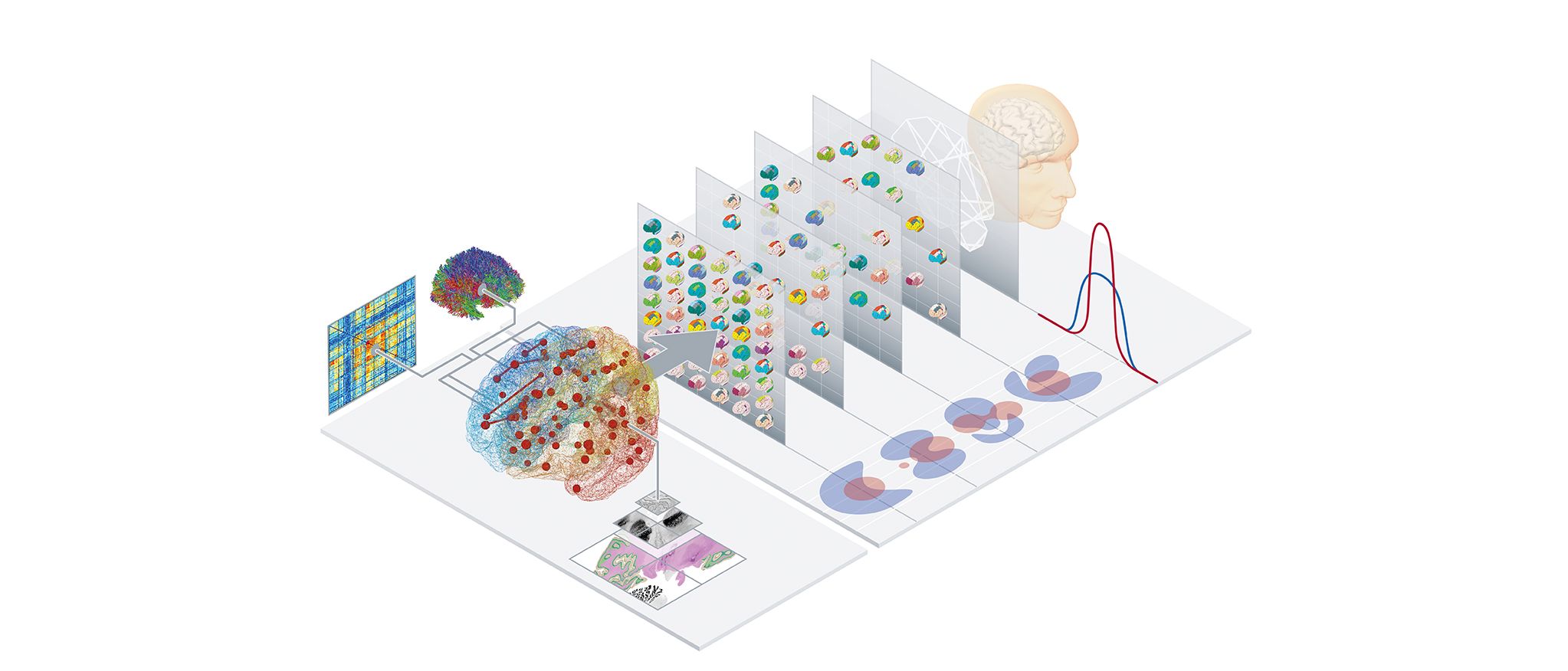
Virtual ageing brain model on EBRAINS simulates how our cognition declines during ageing

Researchers from Aix-Marseille University, Forschungszentrum Jülich and Heinrich-Heine University Düsseldorf employed a virtual ageing brain model and were able to replicate age-related functional changes. The results were published in NeuroImage.
The mechanisms of cognitive decline and how it varies among individuals are not yet fully understood, but have been associated with changes in white matter tracts and the reorganisation of functional brain networks.
As we age, our brain structure changes and this has functional consequences. However, the consequences of a specific structural change can vary across individuals. Due to this phenomenon, older adults may suffer from different levels of cognitive decline, even when they share similar levels of brain atrophy. To better understand the relationship between brain structure and function during ageing, a vast amount of research started to focus on age-related changes in the interaction of specific brain regions, or cognitive brain networks.
Now, the team from Germany and France used virtual brain models to investigate the causal link between white matter degeneration and functional changes with the aim of better understanding how structural changes are associated with the interindividual variability of cognitive decline. Virtual brain technology enables simulations of a person’s brain activity based on the individual’s own brain imaging data.
The researchers made use of a large dataset derived from the population-based cohort study “1000BRAINS” carried out at Forschungszentrum Jülich. The study includes more than 1,000 participants aged 55-85 who have been examined by magnetic resonance imaging (MRI), generating an unprecedented amount of data on brain connectivity, both structural and functional. Systematically analysing this data, the researchers identified specific structural changes associated with ageing.
Based on the detailed dataset about structural variability, the researchers then generated virtual brain models in order to simulate the functional consequences of structural changes associated with ageing. Their work was enabled by a link between the Multilevel Human Brain Atlas and The Virtual Brain (TVB) simulator, both of which are openly available on EBRAINS.
In the Virtual Brain Aging model, they introduced specific structural changes, namely, the degradation between the brain’s hemispheres, and then simulated brain activity. Analysing the patterns of brain activity, they observed the same functional changes that they found across the ageing process in the empirical data of the participants of the 1000BRAINS study. Specifically, they were able to reproduce in silico the more global integration of functional brain networks during ageing, a process called “functional dedifferentiation”.
In reaction to the interhemispheric fiber tract decline, the model predicted a shift of the optimal working point of the whole system brain towards higher values, i.e. more network interaction. This shift of the optimal working point related to the cognitive decline of the subjects, thus supporting the hypothesis that this specific structural degeneration was indeed causally linked to cognitive decline – at least on a group level.
To understand whether this effect could also be observed on the individual level, the researchers generated an entire cohort of virtual brains, each based on the data from one single subject of the 1000BRAINS study. They found that the individual structural changes led to the hypothesised functional effects in each individual, confirming and extending the group-level predictions to individual level. But they also correctly predicted functional decline to be more pronounced in some than in others, despite the same amount of structural change.
Taken together, by manipulating brain structure in the computer, the researchers replicated in silico the observed trajectory of white matter decline that they observed empirically, and saw the same trends for the ageing trajectories as well as for the simulated ageing cohort.
These results might be the first mechanistic demonstration of the dedifferentiation hypothesis, which suggests that a breakdown of the specific architecture of functional brain networks and their more wide-spread linkage throughout the entire brain during ageing contributes to cognitive decline.
This study shows the first results from virtual ageing models based on empirical imaging and cognitive data from a large population-based sample of older adults. The Virtual Aging Brain pipeline is available for usage through EBRAINS.
News & events
All news & events- User stories07 Jan 2025

- Science and technology20 Dec 2024


- News20 Dec 2024
